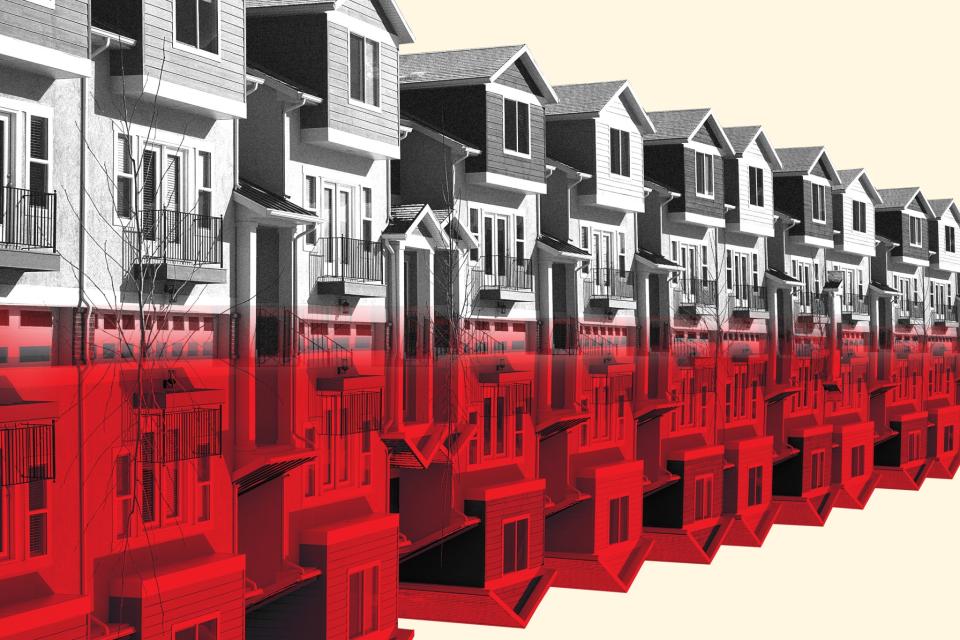America is a tale of two rental markets, data reveals—here are the regions where rents are climbing and falling the most

After falling for almost a year, rents are creeping up. The median asking rent rose 0.8% in May from a year earlier to $1,653. It’s the highest level since October 2022, and the second straight increase, according to Redfin.
There was a recent boom in multifamily construction, which is why we saw rents fall, and there’s still a backlog of apartment buildings in the works, so prices can’t move up too much, as Redfin points out. That’s not great for investors, but it is for anyone who needs to rent a home to live in.
“Demand from young renters remains high, as many of them are opting to stay put rather than contend with an increasingly unaffordable homebuying market,” Redfin senior economist Sheharyar Bokhari noted in the newly published analysis. “But so far, rent price growth has been limited because there are enough new apartments to meet demand, even in the busiest time of year for the rental market.”
Still, this increase is no match for what happened during the pandemic; asking rents rose 17.5% year over year at one point, according to Redfin. Either way, despite falling for some time before the latest increase, the median asking rent is less than $50 below a record high reached in August 2022. So rents are still high even if they’re now rising at a slower pace. Consider this: If you were to spend no more than 30% of your income on rent (any more would be considered rent burdened), you’d need to make almost $80,000 a year, according to an earlier analysis from Zillow; five years ago, you would have only needed to make less than $60,000 a year.
There’s a lot of variation in the housing world, and rents are no different; it’s a tale of two rental markets, one where rents are falling and another where they’re climbing. The median asking rent rose the most in Washington, D.C.—11.1% from a year earlier, according to the analysis. Cincinnati’s median asking rent rose 10.9% in the same period; Chicago’s rose 10.8%; Virginia Beach’s rose 10.3%; and Minneapolis’s median asking rent rose 10.3%.
But they’re declining in the Sunbelt and some other metropolitan areas. The median asking rent declined the most in Jacksonville, falling 10.1% in May from the previous year. The median asking rent fell 8.7% in San Diego during the same time period, 7.2% in Austin, 5.9% in Seattle, and 5.5% in Phoenix.
“Rents are falling in the Sunbelt in part because the region has been building more apartments than other parts of the country (like the Midwest and Northeast) to meet demand brought on by the influx of people who moved in during the pandemic,” the analysis read. “But the pandemic housing boom is now in the rearview mirror, and property owners are facing vacancies, which is causing rents to cool.”
(It’s important to note the median asking rent figures in this analysis cover newly listed units in apartment buildings with five or more units, so multifamily homes. Single-family homes in the rental world are a different story.)
In the years to come, how much rents cool is up for debate. Some in the commercial real estate industry have previously suggested this is a temporary phenomenon given the recent boom in construction—not to mention a lot of the declines we’re seeing are where there’s an oversupply (if we can call it that). Recently, Starwood Capital Group’s chairman and CEO, Barry Sternlicht, said rents will rise in two years, unless there’s a massive recession. He seemed to suggest by that time, the increase in apartment construction wouldn’t be enough to counteract the millions of homes we’re missing; although he wasn’t specific on how much rents would rise, particularly given that they’re already headed upward.
This story was originally featured on Fortune.com

 Yahoo Finance
Yahoo Finance 